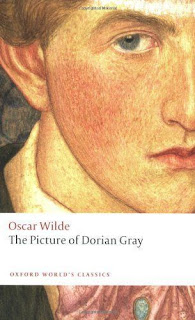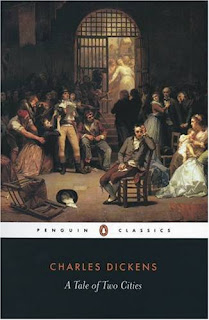Gothic Settings:
Decaying and serious locations surrounded by awa and mystery which encapsulates anxiety in the readers and sometimes characters. Buildings often have a history but have since sunken into decay and evil. Dark and eerie tones dominate the scene.
Origins of the Gothic:
'Goth' derives from the barbaric tribes that invaded the Roman Empire. The first novel was published in the 18th Century. The supernatural was a main theme. Motifs; haunted, dreams, visions, blood, madness, blessed objects.
Male Gothic Protagonists:
Selfish needs. Sinful. Break the rules and go against the natural such as Dr. Viktor Frankenstein or the Prince from The Masque of The Red Death.
Gothic Novels, Short-Stories, Poems:
Dracula, Frankenstein.
Dr Jekyll and Mr Hyde, The Fall of the House of Usher.
The Raven.
Irony has been key to the Gothic genre, incorporating underlying messages of Humanity's flaws.
Friday 24 June 2011
Tuesday 21 June 2011
Gothic Women
Early Gothic women were presented as weak, foolish, helpless, lost and treated badly by their male counterparts. They were submissive and oppressed under a strong patriarchal dominancy.
Women were often placed in distressful situations and threatened by a powerful and implusive male character or in need of a powerful male to protect her.
In contemporary gothic, women are depicted in two extremes, either the submissive of old or a new position that see's them as the dominant character in the story. The revolutionary change was seen strongly in Bram Stoker's 'Dracula' where the naive and innocent Lucy was transformed into a lethal, voluptuous and seductive vampiress. This new persona given to women undermined the foundations of male-dominancy seen prior.
Women were often placed in distressful situations and threatened by a powerful and implusive male character or in need of a powerful male to protect her.
In contemporary gothic, women are depicted in two extremes, either the submissive of old or a new position that see's them as the dominant character in the story. The revolutionary change was seen strongly in Bram Stoker's 'Dracula' where the naive and innocent Lucy was transformed into a lethal, voluptuous and seductive vampiress. This new persona given to women undermined the foundations of male-dominancy seen prior.
Monday 20 June 2011
Dorian Gray
I've decided to read The Picture of Dorian Gray first, unless I'm meant to read them simultaneously?
Going through it this time, the experience is much more relaxed, rather than reading for the sake of getting to the book's climax which I ended up finding out through the recent film version of the novel - disappointment. I'm able to take in the characters: the reserved and seemingly camp Basil Hallward - architect of the infamous drawing of Dorian Gray itself. Dorian Gray, the story's protagonist, initially naive, turned horribly sour by the bad man that is, Lord Henry Wotton, the closest person to the story's antagonist if you exclude Dorian Gray himself. Whey hey, how is that possible? A character that doubles up as protagonist and antagonist? Wilde loved paradoxes, oxymoron (one of the two) so it would be fitting his lead character embodies hero and villain, a juxtaposition present in many forms in the novel, forms such as the immoral and moral, the pure and the sinful.
(Caroline, does this make sense to you, or do I sound unanchored?)
Going through it this time, the experience is much more relaxed, rather than reading for the sake of getting to the book's climax which I ended up finding out through the recent film version of the novel - disappointment. I'm able to take in the characters: the reserved and seemingly camp Basil Hallward - architect of the infamous drawing of Dorian Gray itself. Dorian Gray, the story's protagonist, initially naive, turned horribly sour by the bad man that is, Lord Henry Wotton, the closest person to the story's antagonist if you exclude Dorian Gray himself. Whey hey, how is that possible? A character that doubles up as protagonist and antagonist? Wilde loved paradoxes, oxymoron (one of the two) so it would be fitting his lead character embodies hero and villain, a juxtaposition present in many forms in the novel, forms such as the immoral and moral, the pure and the sinful.
(Caroline, does this make sense to you, or do I sound unanchored?)
Got the literature
Have the two books I shall compare:
A Tale Of Two Cities by Charles Dickens
The Picture of Dorian Gray by Oscar Wilde.
I'm a sucker for anything pre-1900.
Both books I've read previously but I don't think my ten year-old self had the emotional capacity to comprehend Dickens' take on the French Revolution or even my 15 year-old self to have the patience with Wilde's weaving of irony, morals and mock-wit for that matter. Nonetheless, here I am, ready to soak in the words of these old school powerhouses.
A Tale Of Two Cities by Charles Dickens
The Picture of Dorian Gray by Oscar Wilde.
I'm a sucker for anything pre-1900.
Both books I've read previously but I don't think my ten year-old self had the emotional capacity to comprehend Dickens' take on the French Revolution or even my 15 year-old self to have the patience with Wilde's weaving of irony, morals and mock-wit for that matter. Nonetheless, here I am, ready to soak in the words of these old school powerhouses.
Wednesday 15 June 2011
Books?
Started a bit later than everyone else so still on the decision of which books to read. Leaning towards the gothic area too but do Edgar Allan Poe's short stories count? They're not really fully-fledged novels..
Let's do some blogging!!! Woohoohoooo
Right, just started the beggining of my Blog for A2 English Literature C/w; have to read and compare two novels of our choice.
Subscribe to:
Posts (Atom)

